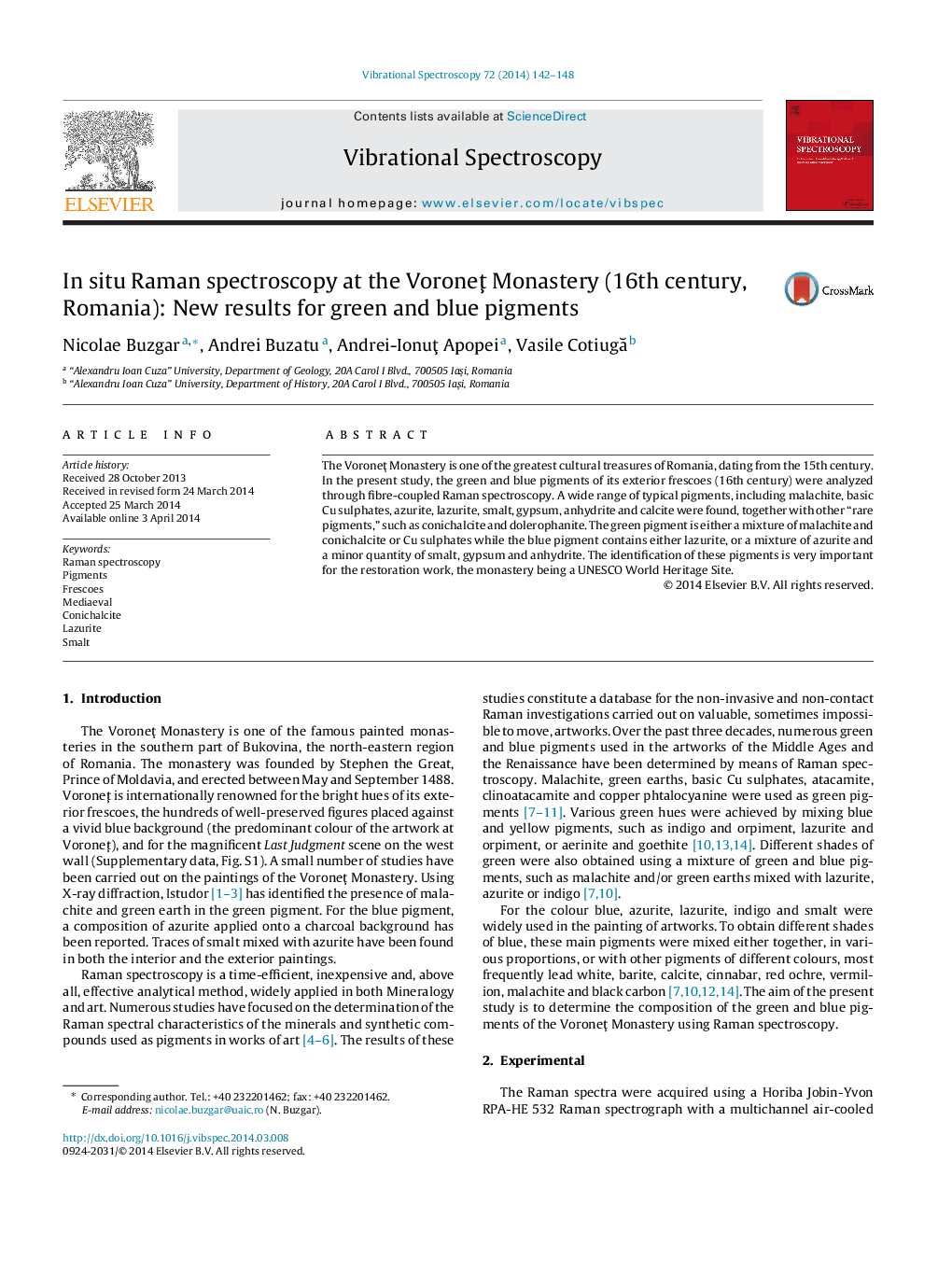| Article ID | Journal | Published Year | Pages | File Type |
|---|---|---|---|---|
| 1251840 | Vibrational Spectroscopy | 2014 | 7 Pages |
The Voroneţ Monastery is one of the greatest cultural treasures of Romania, dating from the 15th century. In the present study, the green and blue pigments of its exterior frescoes (16th century) were analyzed through fibre-coupled Raman spectroscopy. A wide range of typical pigments, including malachite, basic Cu sulphates, azurite, lazurite, smalt, gypsum, anhydrite and calcite were found, together with other “rare pigments,” such as conichalcite and dolerophanite. The green pigment is either a mixture of malachite and conichalcite or Cu sulphates while the blue pigment contains either lazurite, or a mixture of azurite and a minor quantity of smalt, gypsum and anhydrite. The identification of these pigments is very important for the restoration work, the monastery being a UNESCO World Heritage Site.
